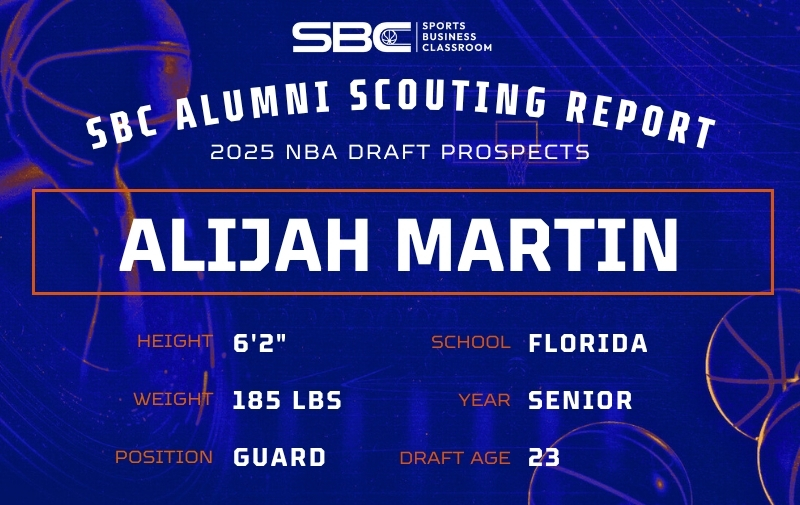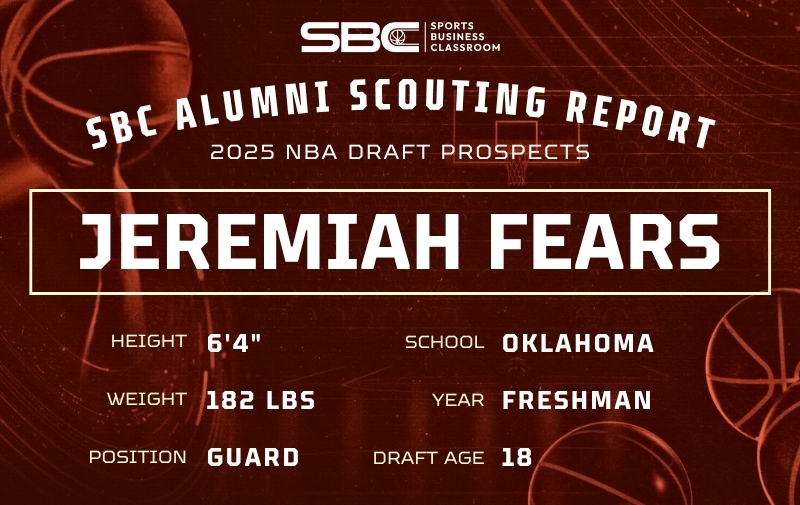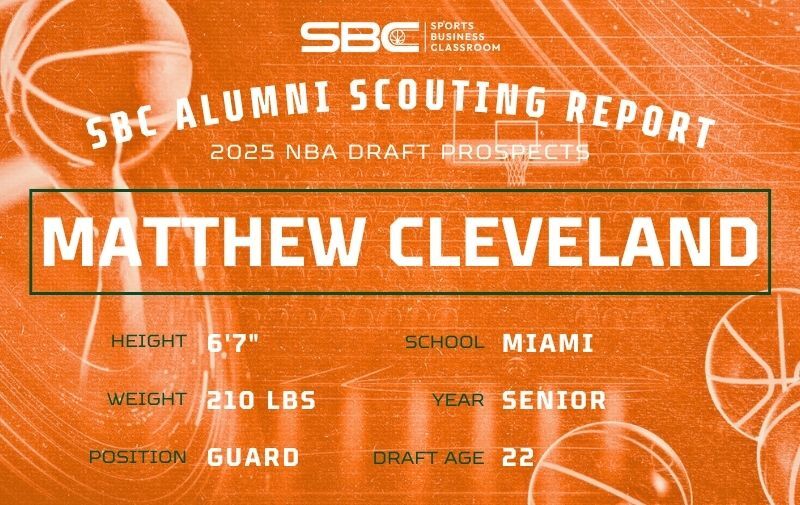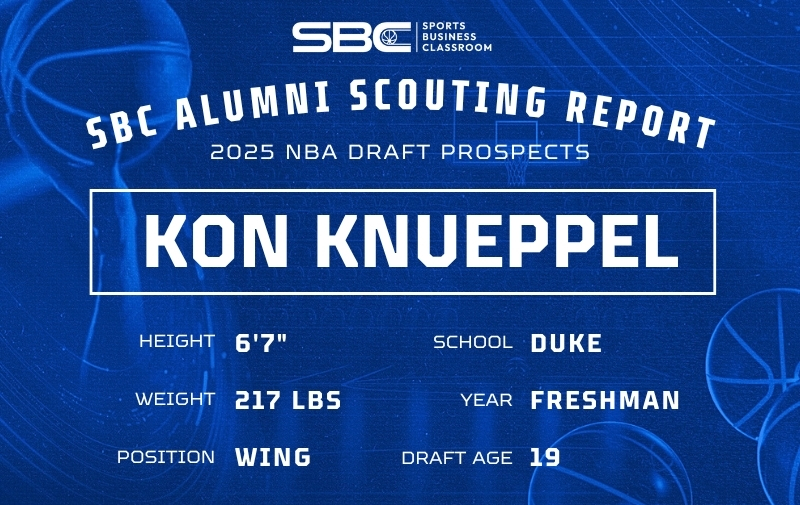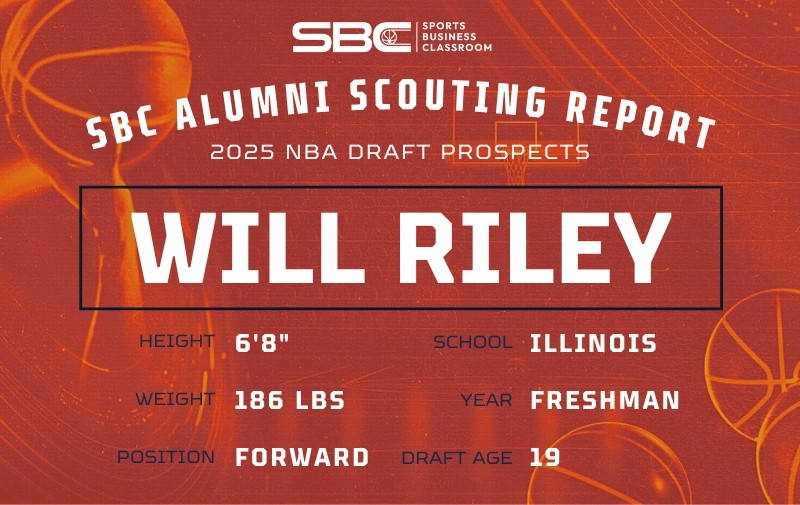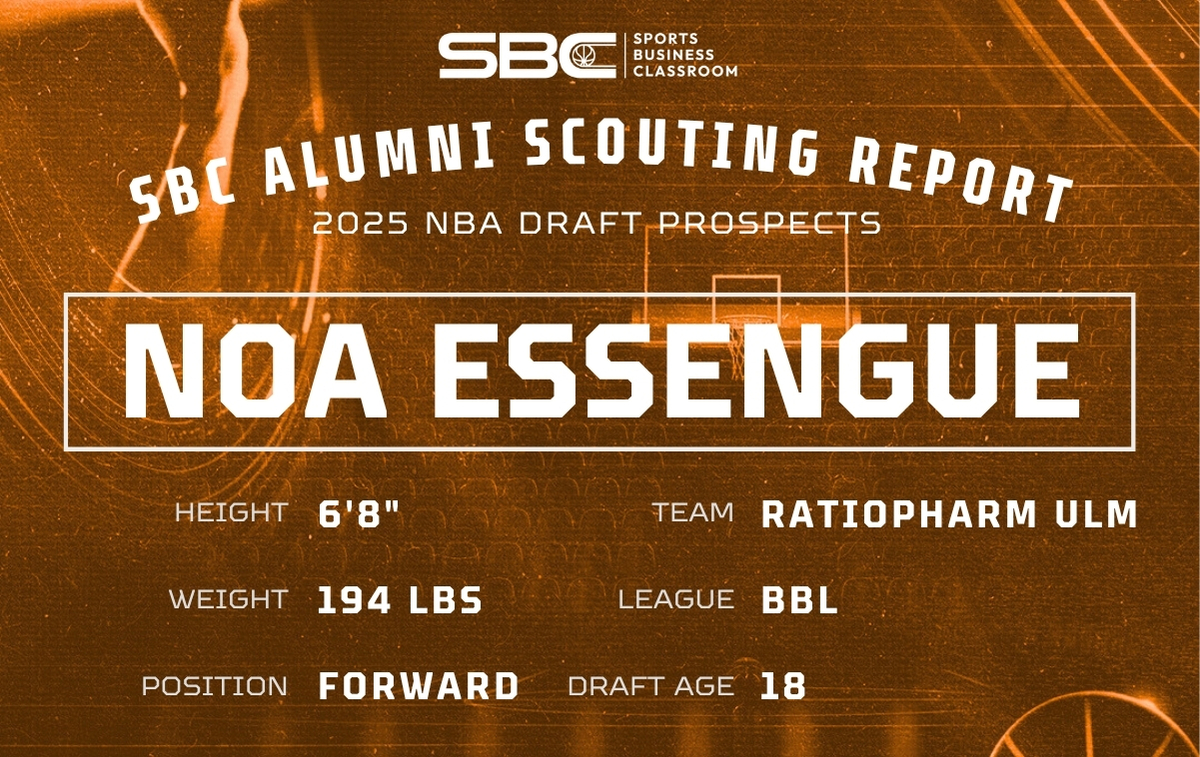
[The following scouting report is part of a series on potential 2025 draft prospects from Sports Business Classroom alumni.]
Noa Essengue
Frame: 6’8″, 194 lbs
Position: Forward
Team: Ratiopharm Ulm
2025 Draft Age: 18
Stats via RealGM
Offense
At his current development stage, Essengue is a ‘positionless’ player. He is still growing into his body, but has an intriguing yet mysterious upside, like Aleksej Pokuševski’s once did. His role in the NBA is yet to be determined, but he has shown versatility throughout his young career, playing as a wing and a big man.
Essengue is a constant presence around the rim when the ball goes in the air. He shows a strong motor on the glass using his length and timing to clean up missed shots and generate second-chance opportunities. His ability to tip in teammates’ misses or keep possessions alive is his most reliable source of production for now. With long arms and good instincts, he consistently beats slower or less alert defenders to the ball. Sometimes it even looks like defending bigs tend to lose sight of him because of his slim frame.
In terms of scoring, Essengue shows the most upside in open court, where his long strides and improving body control make him an effective finisher when he gets downhill. He averages 1.5 points-per-possession in transition, reflecting his potential as a fast-break weapon even though he’s still developing the physicality to capitalize on these opportunities consistently.
For a player of his age, size, and position, Essengue is also a surprisingly effective passer, especially in transition. He has good court vision and makes quick, simple reads to keep the offense flowing. His passing is functional and fits best in a low-usage role where he can keep the ball moving.
Essengue’s shooting, however, has always been a red flag and remains highly inconsistent. While his form started to look cleaner on some attempts, especially from the free-throw line, where he just went 19 of 20 in the playoff series against Alba, he struggles with rhythm and touch from the field. His shot selection is still evolving: he’ll occasionally hit tough shots, like a one-legged turnaround jumper at the buzzer, but it’s interspersed with rushed, awkward attempts that miss badly. His ball-handling is similarly raw: he doesn’t have the coordination or strength to beat defenders off the dribble. He often runs into help defenders without an exit strategy and struggles to finish through contact.
Off the catch, though, Essengue shows more promise. He can attack closeouts effectively thanks to his long strides when given space and time. Once he gains momentum, he can blow past defenders and finish strong. These actions are usually direct and straight, but he’s becoming more comfortable reading angles and picking spots to go downhill. He’s also shown improved awareness in not forcing plays when the lane is cut off, slowing down and moving the ball instead of driving into a wall. Still, his clunky handle limits his ability to create in tight spaces or change direction against athletic defenders.
Defense
Essengue’s physical tools—length, mobility, and positional size—stand out more than his current defensive performance. While he has shown improvement throughout the season, analytics suggest he’s an average defender at best.
Defensively, Essengue brings a versatile foundation and flashes of real impact. He has shown the ability to pick up quicker ball handlers full court and double effectively to smother offensive actions. He also sometimes contributes as a small-ball five, showing competence on the glass and positional awareness as a rim protector. His stat line—leading Ulm in steals + blocks—reinforces the visible defensive upside he brings, particularly as a weakside disruptor.
Motor-wise, Essengue is fairly active for a player of his build. While not relentless, his energy level is solid and improves his defensive potential. When defending in space, his length allows him to contest cleanly without over-committing, and he can recover using his stride and timing. He covers ground quickly, competes on plays, and will make the extra effort, particularly when chasing rebounds and fighting for loose balls.
Against bigger players, Essengue frequently applies aggressive pressure on the perimeter and leverages his quick hands to force turnovers—closing out passing lanes or poking the ball loose. Still, his lack of physical strength is a significant issue under the basket. Essengue can be overpowered in the post, moved off his spot, or easily boxed out by stronger players. True big men often dislodge him and establish deep seals without much resistance. His stance is wobbly, and his lack of lower-body strength limits his ability to hold position in the post or win physical battles inside.
Looking Ahead
Essengue is a work in progress, but his developmental curve gives hope for optimism. Early in the season, he looked lost in certain defensive coverages and unsure of his role offensively. Now, he is more assertive, confident, and far more present in the flow of the game. He’s taken real strides in awareness and maturity, particularly in how he reads the game and uses his body.
While it’s still unclear what position he will ultimately play at the NBA level, Essengue projects as a versatile combo forward with upside on both ends. He has been used as a small-ball five in stretches but is more likely to settle into a wing-forward role due to his lack of core strength. At times, he appears to be between positions—not quite comfortable on the perimeter or assertive enough under the rim. Still, his toolkit is rare, and his flashes are increasingly frequent.
Essengue doesn’t have one unique skill to separate him from the competition, but his physical profile projects real upside. Although his floor is relatively low due to his lack of shooting and strength, his ceiling is perhaps closer to a raw version of Scottie Barnes, although he is far behind in on-ball skills and physical development.
In the long term, his value will likely come from his rebounding, length, and potential as a low-usage, switchable forward. He’ll need to improve his strength, ball-handling, and spot-up shooting consistency to carve out a more defined role, but his frame and mobility give him a foundation worth investing in. It’s also worth noting that he’s one of the youngest players in the draft and currently projects to be a mid-first-round pick.


